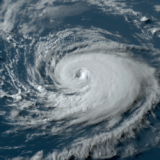Scientists Declare Doomsday Clock is Still at 90 Seconds to Midnight!
In a world grappling with the aftermath of a horrific war in Gaza, escalating regional conflicts, and the alarming reality of the hottest year on record, the infamous Doomsday Clock will remain frozen at 90 seconds to midnight. The Bulletin of the Atomic Scientists, the arbiter of this ominous countdown, made the announcement, marking the second consecutive year at this perilous proximity to potential global catastrophe.
Last year’s move to 90 seconds from midnight was a stark testament to the unprecedented challenges humanity faced, encompassing nuclear threats, climate change, and the swift evolution of disruptive technologies like artificial intelligence and biotechnology. This year, despite the persistent chaos and looming dangers, the clock will not inch away from the brink.
Rachel Bronson, President and CEO of the Bulletin of the Atomic Scientists, emphasized during a press event that the decision to maintain the ominous setting at 90 seconds is not a cause for complacency. In fact, it underscores the profound instability of our current global state.
The Doomsday Clock, conceived in 1947 by artist Martyl Langsdorf, has evolved from a visual representation of humanity’s metaphorical proximity to global catastrophe to a calibrated assessment by science and security experts. These experts meticulously evaluate a spectrum of human-made threats, including climate change, nuclear weapons, and emerging technologies.
Bronson highlighted two critical messages in the Bulletin’s statement: first, the precarious nature of the 90-second setting should not breed complacency, and second, the rapid advancement of technology is outpacing our ability to govern it effectively.
The specter of a new nuclear arms race looms large as countries with nuclear capabilities engage in modernization programs. The Earth, grappling with the aftermath of its hottest year on record, faces the devastating consequences of climate-related disasters. The Bulletin also expressed concern about the lack of decisive action on climate change, endangering billions of lives and livelihoods.
Biological research, hailed for its potential in preventing future pandemics, introduces a double-edged sword, as the very research aimed at safeguarding humanity also carries the risk of unleashing unforeseen threats.The recent strides in artificial intelligence, a technology with the power to either uplift or jeopardize civilization, raise a myriad of questions about control and governance.In essence, the Doomsday Clock serves as a stark visual reminder of the critical issues that demand immediate attention. It acts as a beacon, urging global citizens and policymakers to confront the challenges head-on. While frozen at 90 seconds to midnight for now, the clock’s ominous ticking underscores the urgency for collective action in the face of an increasingly complex and precarious world. The Bulletin’s experts, next year, may choose to recalibrate the clock based on the progress humanity makes—or fails to make—toward a safer, more stable future.






